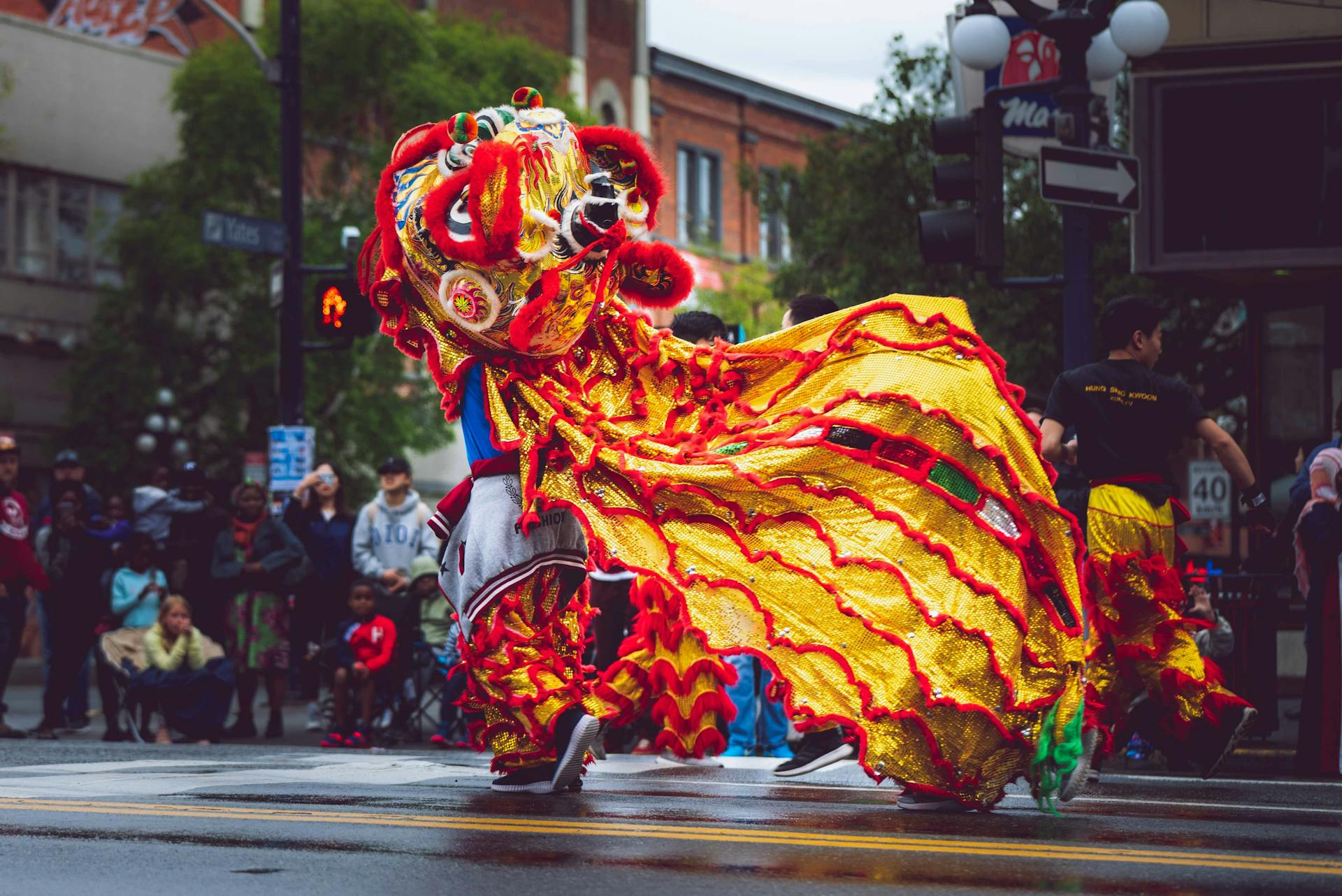Lion dance, a traditional and captivating performance, plays a significant role in various cultural celebrations, particularly during festivals. With its dynamic movements, colorful costumes, and vibrant music, the lion dance has become an iconic representation of luck, prosperity, and joy. In this article, we will explore the uniqueness of lion dances in festivals, their historical significance, and the different styles that make them stand out.
Historical Significance
The lion dance has a rich history that dates back over a thousand years. Originating in China, it was initially performed to drive away evil spirits and bring good fortune. Over time, the lion dance evolved and spread to other parts of Asia, including Vietnam, Malaysia, and Singapore, where it became an integral part of local festivals and celebrations. The lion dance is not just a performance; it is a cultural tradition that has been passed down through generations, preserving the heritage and values of the community.
Different Styles of Lion Dance
There are two main styles of lion dance: the Northern Lion Dance and the Southern Lion Dance. Each style has its own distinctive characteristics and techniques.
- Northern Lion Dance: The Northern style, also known as the Peking Lion Dance, is characterized by its realistic and lifelike movements. The northern lion costume typically features long, flowing fur and a more natural appearance. Performers of this style focus on mimicking the behavior of a real lion, including playful and agile movements. This style is often seen in northern China and is performed during various festivals and special occasions.
- Southern Lion Dance: The Southern style, also known as the Cantonese Lion Dance, is more commonly seen in southern China and other parts of Asia. This style is known for its strong and powerful movements, as well as its elaborate and colorful costume. The southern lion costume typically features a large head with expressive eyes and a vibrant, decorative body. Performers of this style often incorporate martial arts techniques and acrobatics into their routines, making it a visually stunning and energetic performance.
Lion Dance in Vietnamese Festivals
In Vietnam, the lion dance, known as “Múa Lân,” holds a special place in various festivals, particularly during the Lunar New Year (Tết) and the Mid-Autumn Festival (Tết Trung Thu). The lion dance is believed to bring good luck and drive away evil spirits, making it an essential part of these celebrations.
During Tết, lion dance troupes perform in the streets, visiting homes and businesses to bless them with prosperity and good fortune for the coming year. The lively music, which includes drums, cymbals, and gongs, adds to the festive atmosphere, drawing crowds of spectators. The lion dance is not only a visual spectacle but also an auditory experience that captivates the audience.
The Mid-Autumn Festival, celebrated in the eighth lunar month, is another occasion where lion dances are prominently featured. This festival is often associated with children, and the lion dance performances during this time are especially vibrant and playful. Children follow the lion dancers, carrying lanterns and enjoying the festive atmosphere. The lion dance, with its joyous and energetic movements, brings excitement and delight to both young and old.
The Art of Lion Dance Performance
The art of lion dance performance requires skill, precision, and dedication. Performers undergo rigorous training to master the intricate movements and techniques. A typical lion dance troupe consists of two performers: one controlling the head and the other controlling the body and tail. The coordination between the two performers is crucial to create a seamless and lifelike performance.
The head performer is responsible for the lion’s expressions and movements, using subtle gestures to convey emotions such as curiosity, playfulness, and aggression. The body performer, on the other hand, must synchronize their movements with the head performer, ensuring that the lion’s actions appear natural and fluid. Together, they bring the lion to life, captivating the audience with their performance.
Conclusion
The lion dance is a mesmerizing blend of art, culture, and tradition. Its unique styles and vibrant performances make it a standout feature in festivals around the world. Whether it is the Northern or Southern style, the lion dance continues to enchant audiences with its dynamic movements and rich cultural significance. As we celebrate these festivals, the lion dance reminds us of the importance of heritage, unity, and the joy of coming together to share in the festivities.
Through its captivating performances, thuê múa lân tại Hà Nam not only entertains but also preserves and promotes the cultural values that have been cherished for generations. It is a testament to the enduring power of tradition and the universal appeal of this ancient art form.


Comments